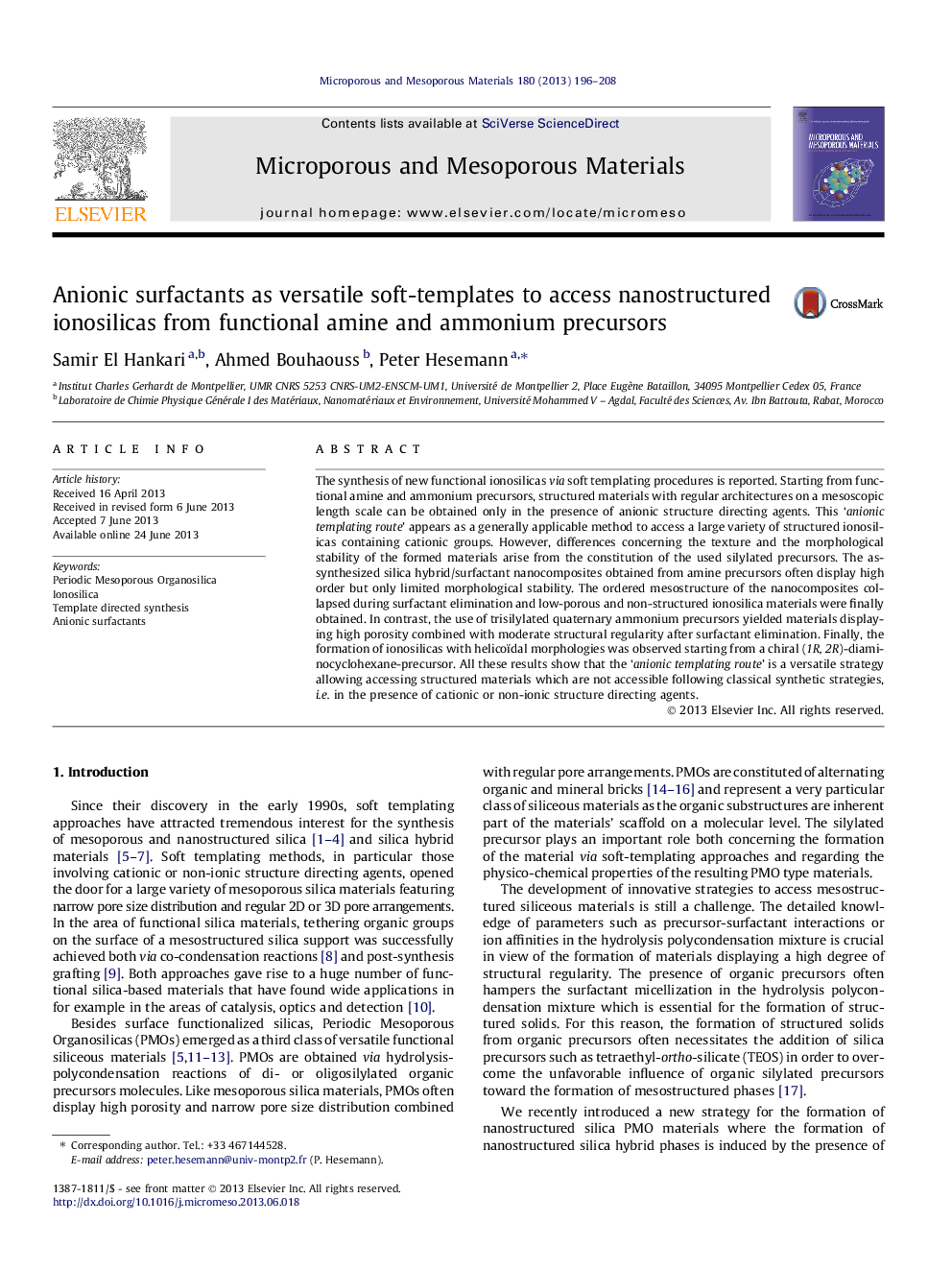| Article ID | Journal | Published Year | Pages | File Type |
|---|---|---|---|---|
| 73258 | Microporous and Mesoporous Materials | 2013 | 13 Pages |
•Functional organosilicas were obtained from amine and ammonium precursors.•Anionic templating allows to access mesostructured materials from cationic precursors.•Structured ionosilicas were only obtained in the presence of anionic surfactants.•The constitution of the precursor play an important role in view of the formation of structured phases.
The synthesis of new functional ionosilicas via soft templating procedures is reported. Starting from functional amine and ammonium precursors, structured materials with regular architectures on a mesoscopic length scale can be obtained only in the presence of anionic structure directing agents. This ‘anionic templating route’ appears as a generally applicable method to access a large variety of structured ionosilicas containing cationic groups. However, differences concerning the texture and the morphological stability of the formed materials arise from the constitution of the used silylated precursors. The as-synthesized silica hybrid/surfactant nanocomposites obtained from amine precursors often display high order but only limited morphological stability. The ordered mesostructure of the nanocomposites collapsed during surfactant elimination and low-porous and non-structured ionosilica materials were finally obtained. In contrast, the use of trisilylated quaternary ammonium precursors yielded materials displaying high porosity combined with moderate structural regularity after surfactant elimination. Finally, the formation of ionosilicas with helicoïdal morphologies was observed starting from a chiral (1R, 2R)-diaminocyclohexane-precursor. All these results show that the ‘anionic templating route’ is a versatile strategy allowing accessing structured materials which are not accessible following classical synthetic strategies, i.e. in the presence of cationic or non-ionic structure directing agents.
Graphical abstract‘Anionic templating’ as a versatile and generally applicable method to access functional ionosilicas from silylated amine and ammonium precursors.Figure optionsDownload full-size imageDownload as PowerPoint slide
